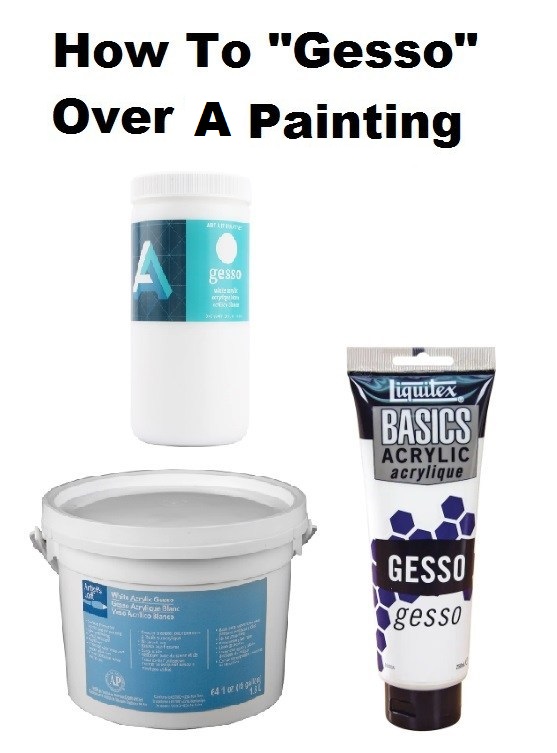
Would you like to save this?
Do you have a painting you messed up on and certain you want to paint over?
We all have our fair share of “mess up paintings”. There’s no shame in it. Messing up means you’re practicing, taking risks and growing in your painting skills!
But what do you do with the canvas? You can always paint over your mess up paintings with…your next acrylic painting! Sometimes I just cover the painting with a solid color (or colors) of paint! The best way to cover it is with a dark color like black or paynes grey.
I personally think that is the easiest way to cover a canvas than going through the gessoing process.
But if you want to return the canvas to a blank white canvas, I recommend using gesso and sanding it!
This post contains affiliate links.
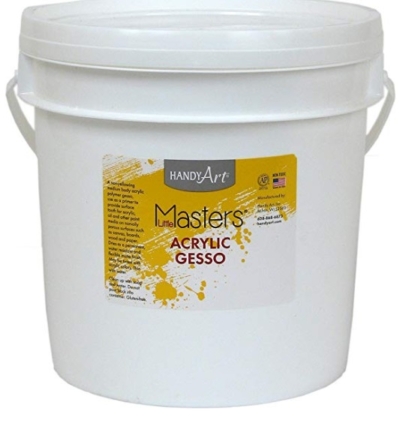
What is gesso?
Gesso is a mixture of paint and other ingredients such as binders & chalk. It’s used to prime a surface so the paint won’t soak into it. The canvases that you purchase at the store have already been prepped with gesso. You can purchase gesso to prime your own surfaces and to turn a painting into a blank canvas again.
Acrylic Gesso is generally very thick, gloppy and opaque. It kind of reminds me of Elmer’s glue mixed with chalk.
How do you gesso over a painting?
Supplies Needed:
- Gesso
- Basecoating Brush (at least 2″)
- Sandpaper
- Optional: Small wooden block to fold sand paper over (I use a Jenga block ;-P)
- Large board/ covered surface because you’ll be laying your canvas flat and painting.
- Optional: some Titanium White paint to increase the opacity of the gesso.
Directions:
1. Make sure your acrylic painting is completely dry!
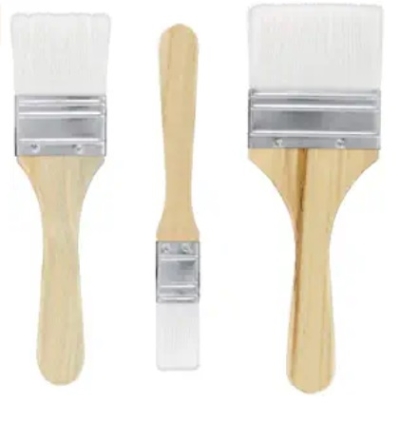
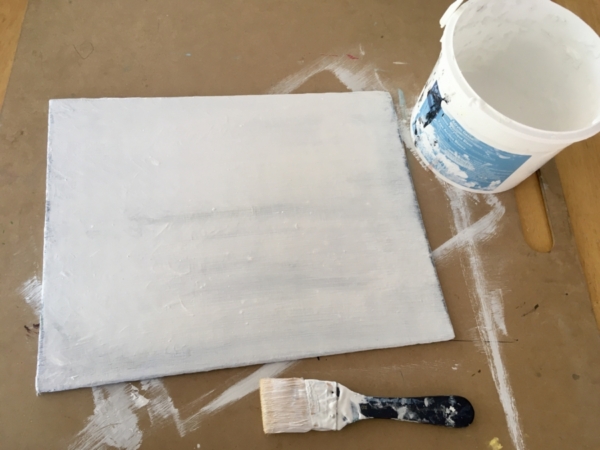
4. Wait for the first coat to dry (about an hour or two depending on your humidity levels).
5. Sand down any uneven layers or remaining texture.
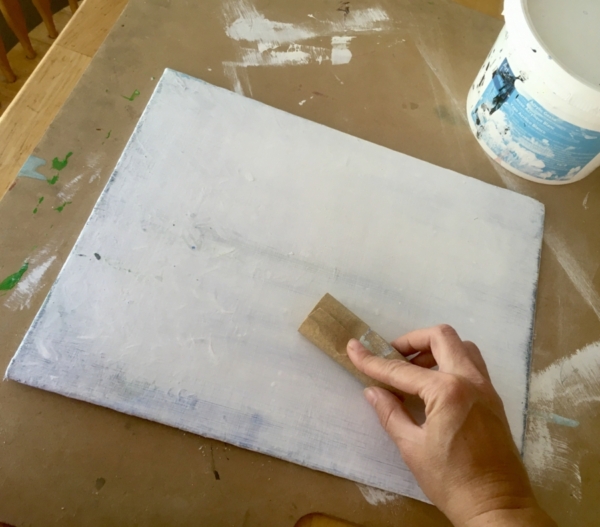

Where do I get gesso?
Any arts and crafts stores such as Michaels sells gesso. You can get it on Amazon as well. I like to buy a big tub of it like this Artist’s Loft One. Tubs of gesso are fairly inexpensive and worth buying for practice paintings and our inevitable mess ups!
Do I have to gesso over a painting if I want to reuse it?
Nope! Sometimes I’ll skip the gesso process and just paint over the previous mess up painting with my first layer of paint. Gessoing takes quite a bit of time and is a bit cumbersome. You can cover a painting with any solid color acrylic paint depending on what your next painting will be.
See Also…
Like beginner painting posts like this? See also: how to seal your acrylic painting & acrylic brush techniques.

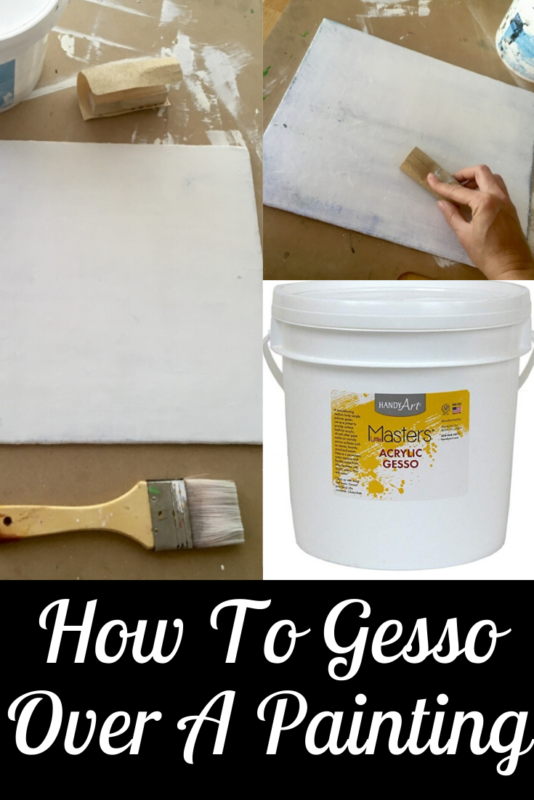
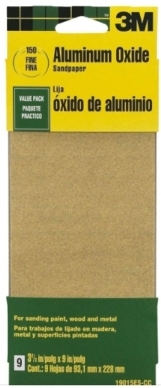
Thank you for this site! I enjoy painting and getting ideas helps a lot. I also learn by watching the shows. I use acrylic in my paintings, so I would like to say thanks for posting your guide and style using acrylics. Nylsa Villar
Thank you soooo very much showing how to paint. I’m just getting started on paint by number but I love what you do much better.
Hi – thanks that’s really useful but should I use white gesso or white gesso primer? What’s the difference?
Apparently I have clear gesso, as it doesn’t seem to cover the old painting. Can I add acrylic white paint to the gesso to make it opaque?
You might be able to try it! Test out an area first to see what it does. Or just use the white paint to cover the painting without the clear gesso. Your paint might have a satin finish to it which would make the canvas kind of “shine” but if the clear gesso is a matte finish, it might make it less of a satin.
Hey, i really liked your art blog and as a beginner, who bought her first acrylic paints today, your blog has been very helpful. I wanted to ask a question, which can be heard a bit silly. Here it comes: What happens if i use gesso instead of white acrylic paint, like for example while mixing with other colors. I have a huge bottle of gesso, which was a gift and i don’t know what to do with it as a beginner, because i do not paint on canvas.
Thanks!
Hi Damla! Not a silly question! I’ve actually done this before, used gesso for white ?. I’m a huge believer in experimenting ? Gesso tends to be a matte finish so you will get the chalky finish when you use it. It’s also thicker and may not be as opaque as your acrylic white. But if you’re okay with that, I say why not! You can mix the gesso with other colors too. Try it out!
Oh thank you so much! I have my first painting that I really wanted to paint over. So glad I found you, helping me so much!